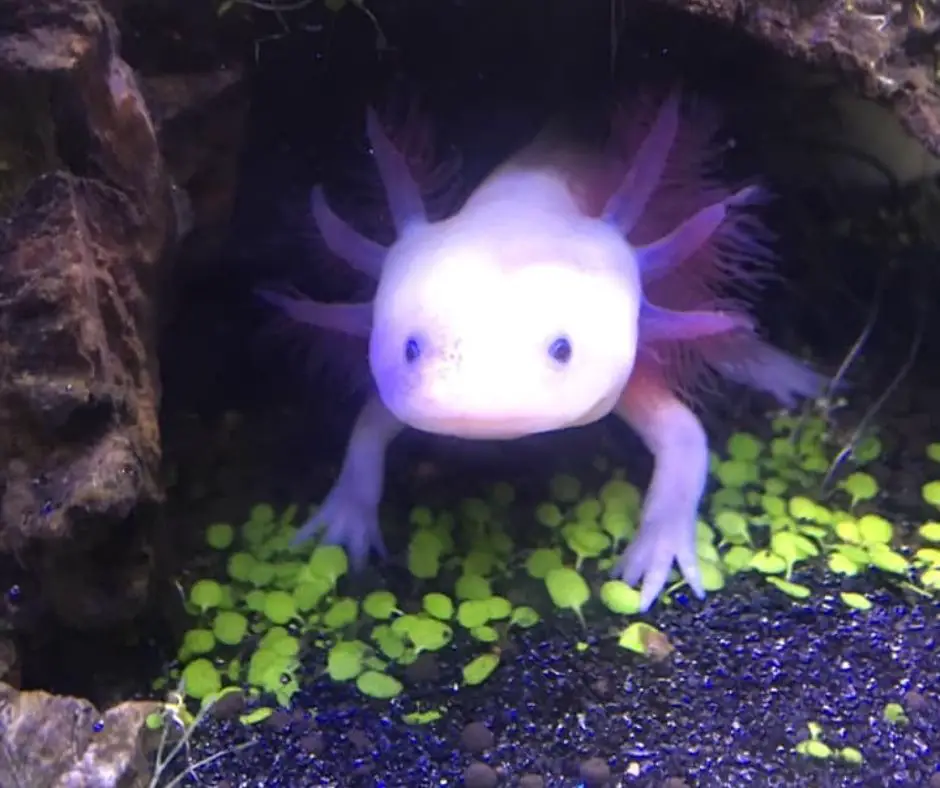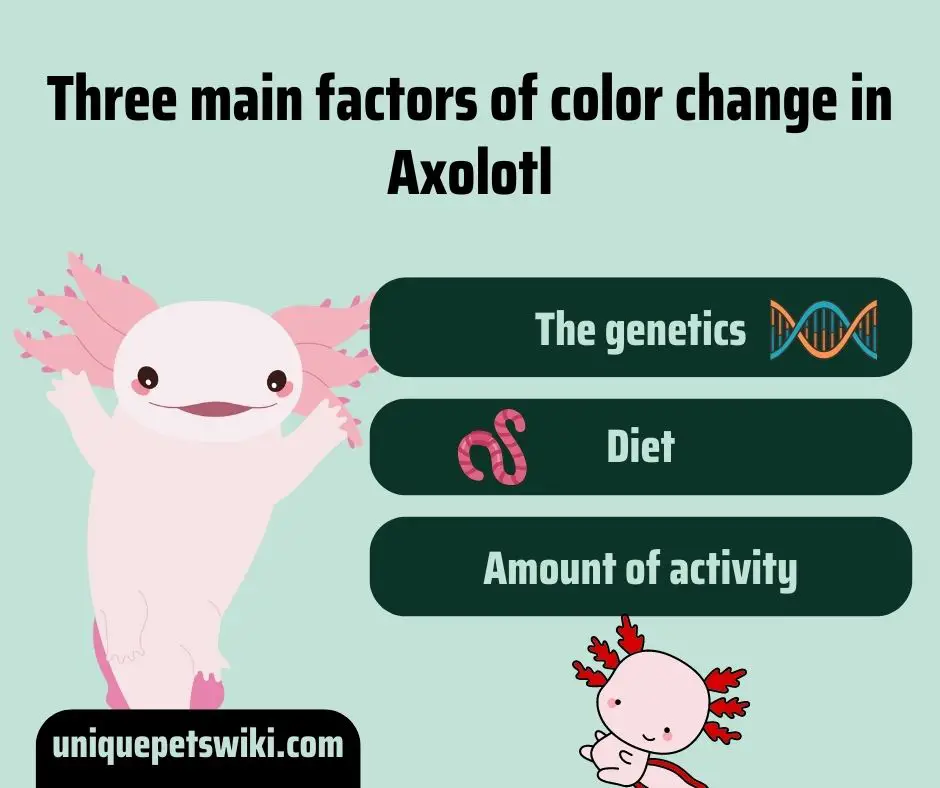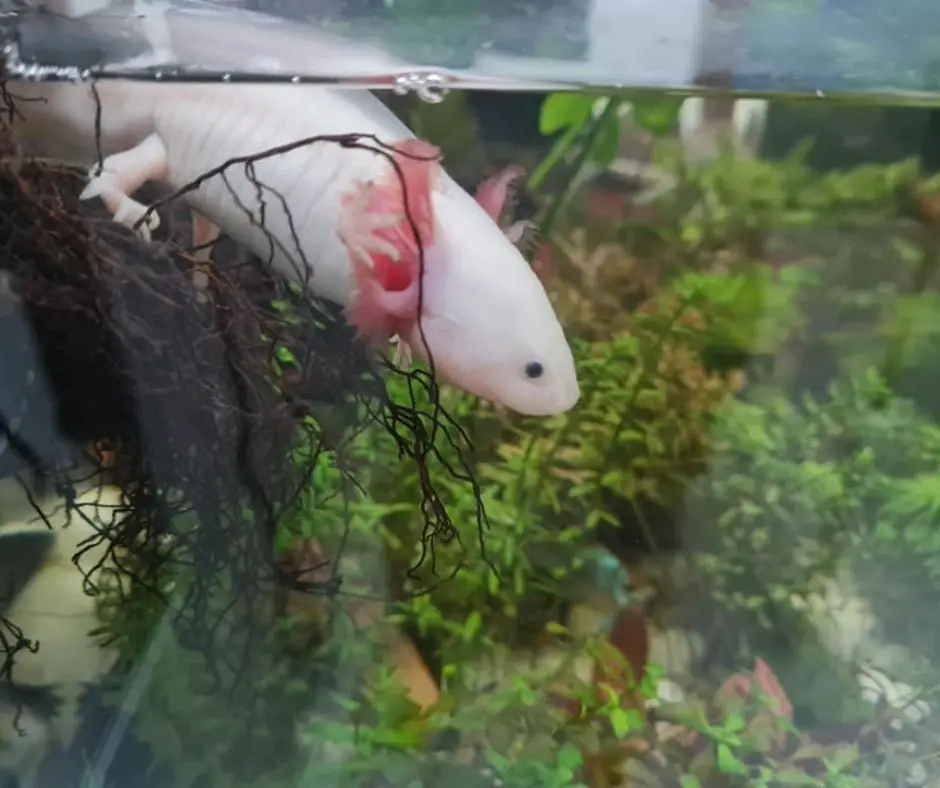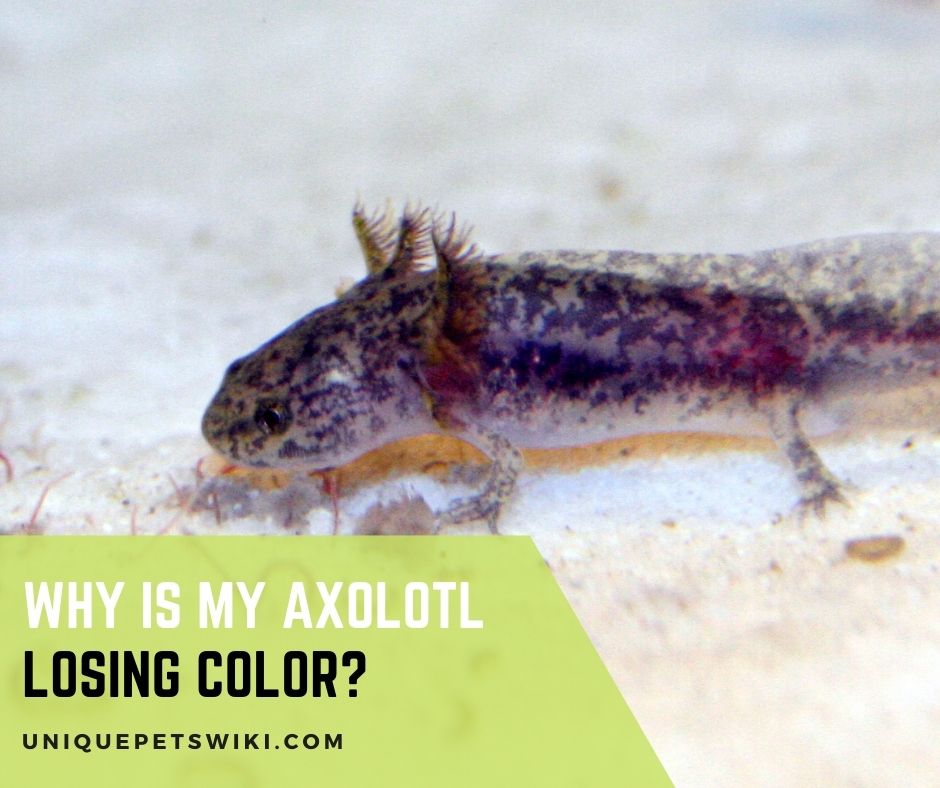Axolotls are fascinating pets that can do a variety of astounding feats.
Depending on the conditions and water parameters, they can alter the color of their skin and gills. Color changes can, however, be caused by a variety of events.
Axolotl owners, like other pet parents, are concerned about their pet’s health and well-being.
The owners may be confused about the health of their cherished pet if the color of their skin or gills changes. So, Why Do Axolotls Change Color?
The information in this article will assist readers in understanding when and how axolotls change color.
The article will also assist readers in determining the various causes of axolotl color change. So, keep reading to learn how to tell the difference between normal and abnormal color changes in axolotls.
Contents
Can Axolotls Change Color?

Axolotls can change the color of their gills and skin. By increasing or decreasing blood flow, they alter the color of the skin and other organs.
Axolotl color change is influenced by a variety of factors, including genetics, diet, water parameters, substrate, age, health, stress, developmental factors, and environmental factors.
Due to mutations in their genetic composition, axolotls come in a variety of colors. They have three color pigments genetically, but only one is dominant in the phenotypic of the axolotl.
Axolotls with different dominant colors are crossed to produce diverse color patterns and color variants.
What Causes Axolotl Change In color?
The genetics, diet, and amount of activity of axolotls are the three main factors of color change.
Iridophore, xanthophore, and melanophore are the three types of chromatophore pigments found in axolotls. These chromatophores each code for one to two distinct colors.
The level of activity also causes a change in color because it affects blood pressure.
Because of the increased blood pressure, an axolotl’s color will be brighter and clearer if it is active and works a lot.
Axolotls’ skin and gills change color because of the type and quantity of food they consume.

Grow
As axolotls get older, their color changes. The skin of a baby axolotl is incredibly thin and fragile, and its color changes as the skin thicken.
Because the dominant chromatophore begins to deposit and manifest in the phenotypic of immature axolotls as they grow.
Axolotls’ skin color darkens as they grow older, and their color completely changes when they reach adulthood.
Melanophore cells are found in the skin, and their secretion increases with age. As a result of the excess deposition of melanophore in the skin, the color darkens.
Food
The color of the gills is primarily influenced by the food. The color of your axolotl’s gills will be bright red after you’ve fed it.
The color of your pet’s gills can turn pale pink if there is a shortage of food or if you don’t feed them for a few hours. The gills get brighter and healthier when food and water are available.
Food is an important component of several metabolic processes and a source of energy for them.
The availability of excellent meals guarantees that blood flow is normal, and that blood pressure is elevated.
As a result of the increased blood flow to the gills, they get brighter and their color changes from pink to red. The brilliant red color of an axolotl’s gills indicates that it is healthy.
Also read: 5 Best Axolotl Commercial Food
Levels of Activity

The color of the gills and skin is also affected by activity levels, mood, and stress. Due to increased blood pressure to the bodily organs, an active axolotl will have a bright red color.
This is why a hunting axolotl’s gills will be red and its skin will be dark or bright in color.
The gills of sleeping, resting, or lethargic axolotl are pale.
Because the gills have insufficient blood flow and pressure leads to low blood concentration in the vessels or a lack of blood to pump through the vessels, an axolotl will be lethargic or inactive.
As a result, the pale color of the gills is also a weak axolotl.
Health Status:
When an axolotl becomes ill or infected, its color changes. Axolotl skin infections change the amounts of chromatophores, which affects color and pigmentation.
As a result, the skin and gills become discolored. Internal infections can also change the color of the pet skin by disrupting blood flow in blood vessels.
Axolotls’ color is affected by changes in water parameters such as oxygen levels, excessive ammonia, and nitrates.
Check the water parameters and see a vet investigate the health and environmental circumstances of axolotls if you notice discoloration on their skin.
Also read: Full Requirements & Water Conditions for Axolotl in Captivity
SA Axolotl Diet. 8oz Bottle. 6.4mm pellets
Last update on 2022-12-29 / Affiliate links / Images from Amazon Product Advertising API
Conclusion:
Axolotls can change color based on their growth stage and surrounding conditions.
Axolotl owners may notice a shift in their axolotls’ color from infant to juvenile to adult. Axolotls can change the color of their skin and feathery gills.
Diet, age, health status, water parameters, and genetic status are all factors that influence the color of axolotls.
Iridophores, melanophores, and xanthophores are three different color pigments that axolotls have in their DNA. As a result, axolotls come in a variety of colors.

